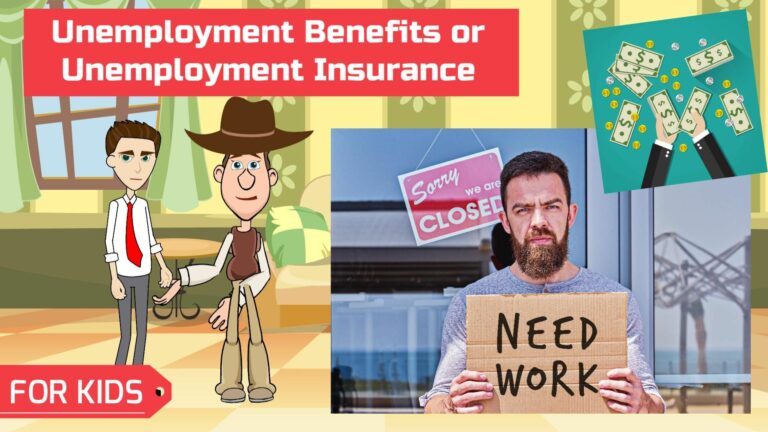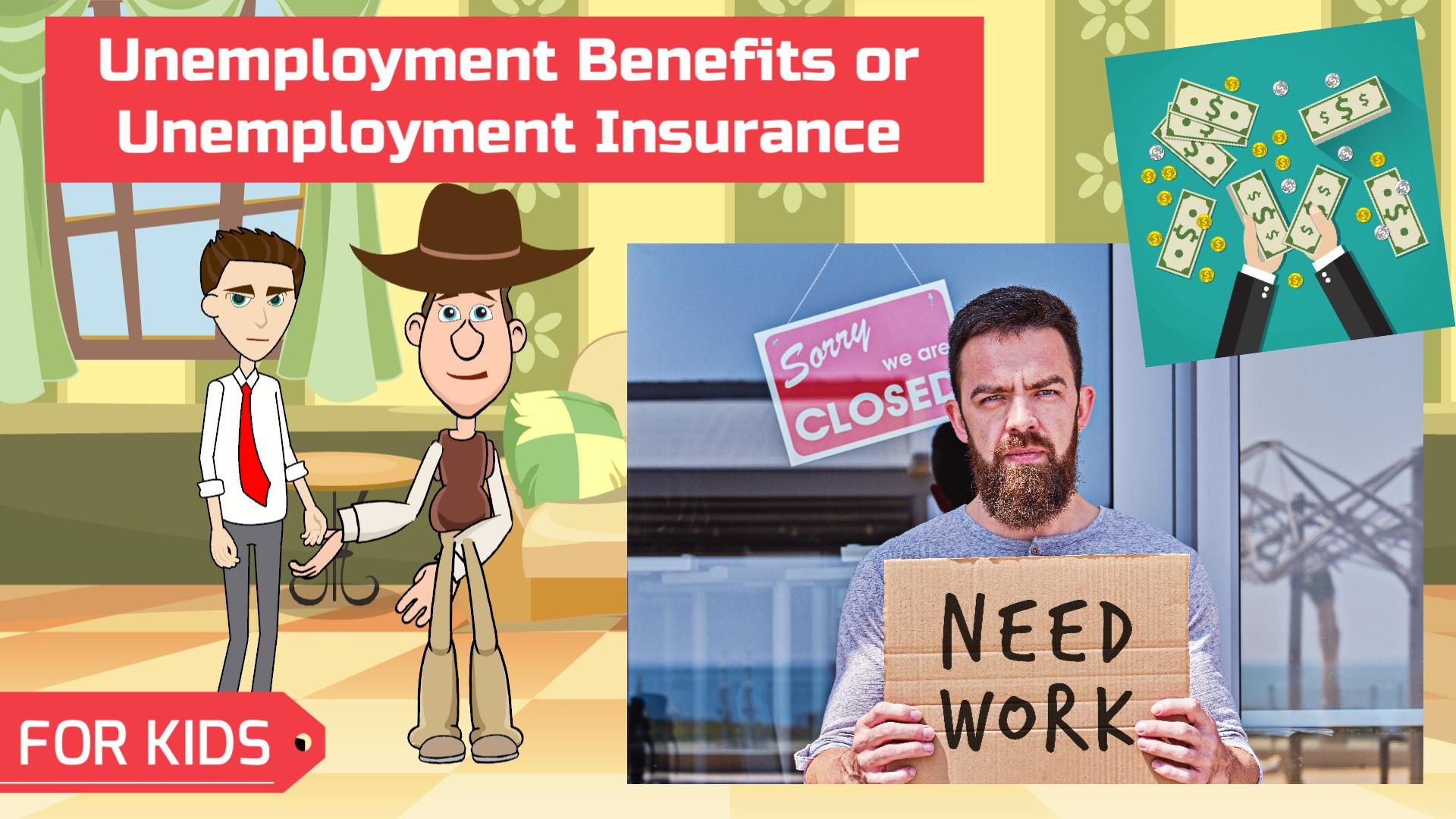Introduction to Unemployment Benefits for Kids and Teens
This video explains the concept of unemployment benefits in a simple, concise way for kids and beginners. It could be used by kids & teens to learn about unemployment insurance, or used as a money & personal finance resource by parents and teachers as part of a Financial Literacy course or K-12 curriculum.

Suitable for students from grade levels:
- Kindergarten
- Elementary School
- Middle School
- High School
The topics covered are:
- What are unemployment benefits
- How much money is paid as unemployment benefits
- Where does the money come from
- What is the criteria to be eligible for unemployment benefits
What are unemployment benefits?
Unemployment benefits, also known as unemployment insurance, are weekly payments that the government provides to workers who have lost their job and meet certain eligibility criteria.

It is meant to help people pay for essentials like rent and food while they are looking for a job.
Unemployment benefits are given up to a certain amount of time (usually 26 weeks) or until the person finds a job – whichever is earlier.
Usually, unemployment benefits are paid through a check or direct deposit.
How much money is paid as unemployment benefits? And where does the money come from?
Unemployment benefit is usually significantly less than the income from your previous job. The amount you get depends on the state you live in and your previous income, and is often a percentage of your average pay over a recent 52-week period.
The average unemployment benefit varies widely across states – it ranged from $44 to $497 per week in 2020.
While the federal government oversees the unemployment insurance program, the benefits are administered by the states and are funded by special payroll taxes collected for this purpose.
What is the criteria to be eligible for unemployment benefits?

The exact criteria varies by state, but usually you need to have worked for a certain amount of time, be actively looking for a job, and should have lost your job through no fault of your own.
For example, you might be eligible for unemployment benefits if you were fired or if your employer went bankrupt.
But if you resigned or were fired for a valid reason, then you wouldn’t be eligible.
Download Transcript: Ideal for Use by Teachers in their Lesson Plan to Teach Kids & Teens
Podcast: What are Unemployment Benefits or Unemployment Insurance
Fun, informative and concise episodes by a 10-year old, breaking down complex financial concepts in a way that kids and beginners can understand. Episodes cover personal finance topics like saving, investing, banking, credit cards, insurance, real estate, mortgage, retirement planning, 401k, stocks, bonds, income tax, and more, and are in the form of a conversation between a cowboy (a finance novice) and his friend, a stock broker. Making finance your friend, only at Easy Peasy Finance.
A little bit about me: I have been fascinated with the world of personal finance since I was 6! I love to read personal finance books, and keep myself updated on the latest by reading various personal finance magazines. My friends often ask me questions about finance because they find it complex and intimidating. That’s what inspired me to start my YouTube channel called Easy Peasy Finance when I was 8, and this podcast 2 years later.
Everything you need to know about Unemployment Benefits or Unemployment Insurance: What are unemployment benefits, how much money is paid as unemployment benefits, where does the money come from, what is the criteria to be eligible for unemployment benefits, and more. Show notes and transcript at What are Unemployment Benefits or Insurance: A Simple Explanation …


